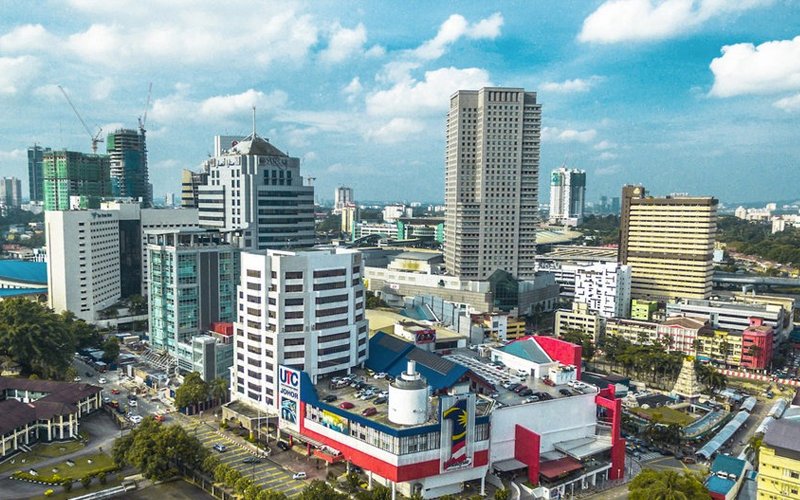
Drastic changes in consumer behaviour in Malaysia have brought with them major changes across the retail industry.
The retail sector in general is expected to remain soft this year, with Johor being the most affected due to its reliance on regional tourism and, in particular, Singapore shoppers.
According to the July 2020 Malaysia Retail Industry Report, second-quarter results were better than the estimate of -18.8% that was made in April. But this year has been the worst period for retailers since 1987.
The association said retailers began to see declining sales due to the spread of Covid-19 and the implementation of the Movement Control Order in March, which led to a drop in the number of foreign tourists.
KGV International Property Consultants (Johor) Sdn Bhd executive director Samuel Tan told Property Advisor that Singaporeans and tourists entering via Singapore are the main drivers of the retail industry in Johor.
“Many are day-trippers or weekend visitors to Johor Bahru for grocery shopping, food, entertainment and personal wellness.
“Due to the MCO, Singaporeans can no longer visit Johor Bahru. It will take a while for things to go back to pre-Covid-19 levels.”
Samuel said more than 10 shopping malls had commenced operations in Johor in the past two years.
“We might see some consolidation, especially with the borders not entirely open. Travel restrictions have lasted longer than expected with the emergence of the second wave of Covid-19 cases in other countries after borders were reopened.”
He said shopper footfall at malls and shops that rely on Singaporeans and tourists had dropped drastically.
KGV research head Tan Wee Tiam said during the MCO, many mall owners had reduced the rents of tenants offering non-essential goods and services by between 20% and a total waiver. Many were forced to shut down during the initial MCO period.
“Despite this, some shops were forced to cease operations, but neighbourhood malls seem to have fared better in this respect.”
David Ng of Cheston International (Johor) Sdn Bhd expects the retail industry in Johor to remain stagnant until the border fully reopens. With cross-border restrictions in place most retailers are having a hard time making ends meet and surviving.
“Retailers are looking at cost-cutting … from rental rates to workforce and supplier cost readjustments, with some pushing their business online via digital marketing and e-commerce.”
He added that according to the headlines, Johor Bahru’s retail sector is dying and has taken a 60% to 70% hit from the exodus of Singapore dollar spenders.
Mall owners have given some tenants discounts of more than 50% on their rent during the MCO (while they were closed) and 15% to 30% during the RMCO (depending on the sector).
Some tenants had continued to pay the full rent during the period, he said, adding that the current rate of vacancies in malls in prime areas is estimated at about 10%, while in non-prime areas it is 30% to 40%.
Customers will go back to bricks-and-mortar stores when they want to experience the ambience a virtual store cannot provide. (Rawpixel pic)
Recovery action to stay relevant
KGV International’s Samuel believes more retailers will adopt an online-offline business model.
“Retail business will be increasingly geared towards ‘experiential-based’ services. Customers will visit bricks-and-mortar stores when they want to experience the ambience a virtual store cannot provide.
“To stay relevant, retail businesses will need to create very strong branding and position themselves well. The old “cut-and-paste” model that made malls so similar to each other will not work now,” he said, adding that asset owners and business operators must work together and agree on rental reductions in the interim.
“The quantum of the reduction or rebate and the duration should vary on a case-by-case basis,” he said.
In fact, Samuel said, the trend towards internet retailing had already begun before the pandemic, with more retailers going online to reach out to a wider market.
“Today’s internet and its reach empowers online retailing, making the shopping experience much more convenient and efficient. Online retailing is going mainstream. Sometimes, consumers visit the physical shop to try out the product or experience the service and then order online.”
He added that retailers also need to ally themselves with online delivery platforms such as GrabFood and Foodpanda.
Other than that, Samuel said, automation, robotisation and digitalisation must be adopted to replace or reduce the need for cheap foreign labour and manual workers as hiring foreign workers may become more difficult in the future.
“Using technology will increase productivity in the long term. The government will have to provide incentives for greater adoption of new technology, including grants and income tax rebates.”
Cheston International’s Ng commented that the food and beverage sector had also been hit badly by the pandemic.
“But everyone still needs to eat and drink, regardless of how bad the situation might be, and the sector is still very much supported by the local markets.
“The utilisation of retail space is decreasing and downsizing. We are observing more vacancies in retail lots in prime locations as some businesses shift slowly from shopping malls to commercial lots because of less stringent policies in their tenancy agreements.
“Tenants are freer to renegotiate or ask for discounts on their rental rates due to the Recovery MCO restrictions and current market conditions,” he said.

